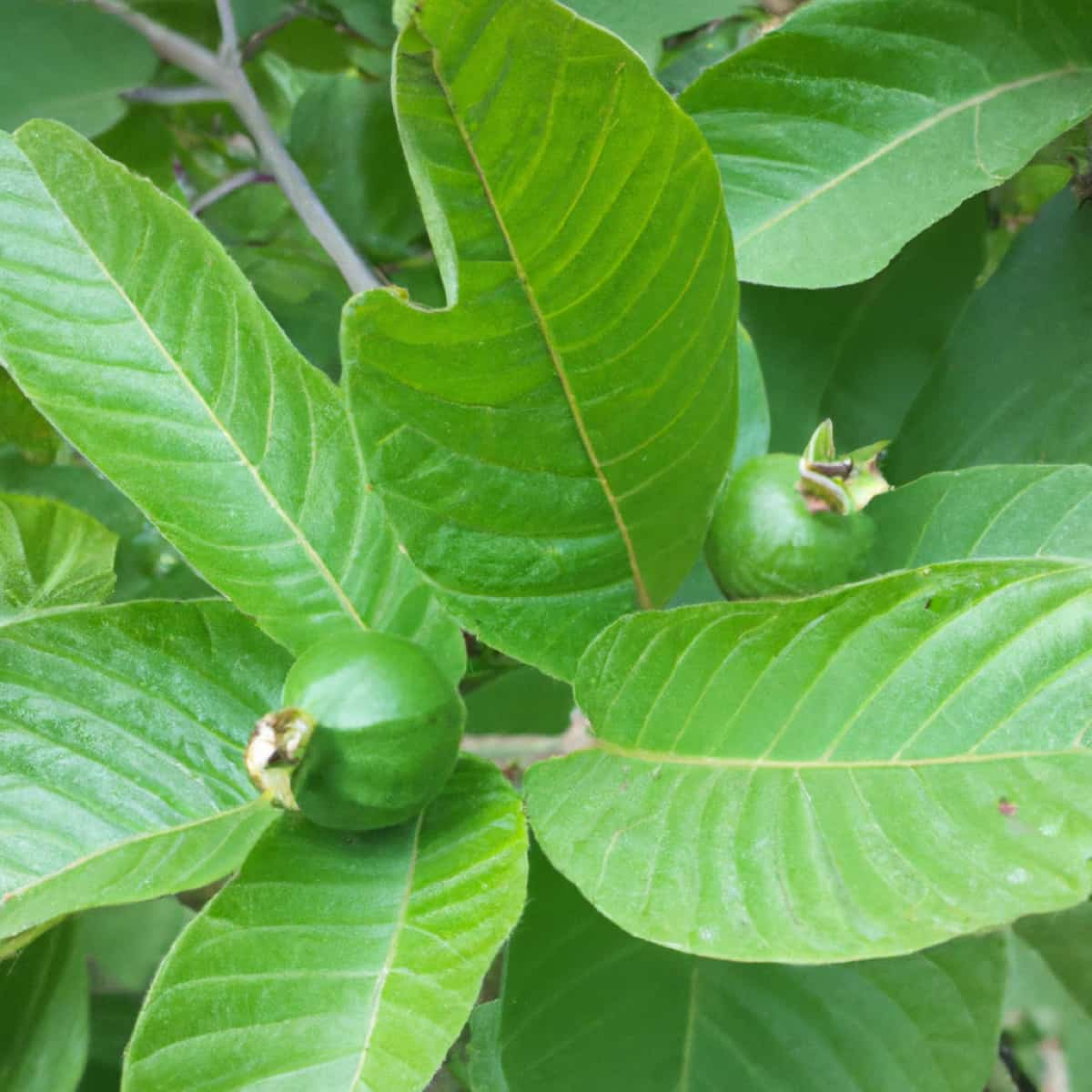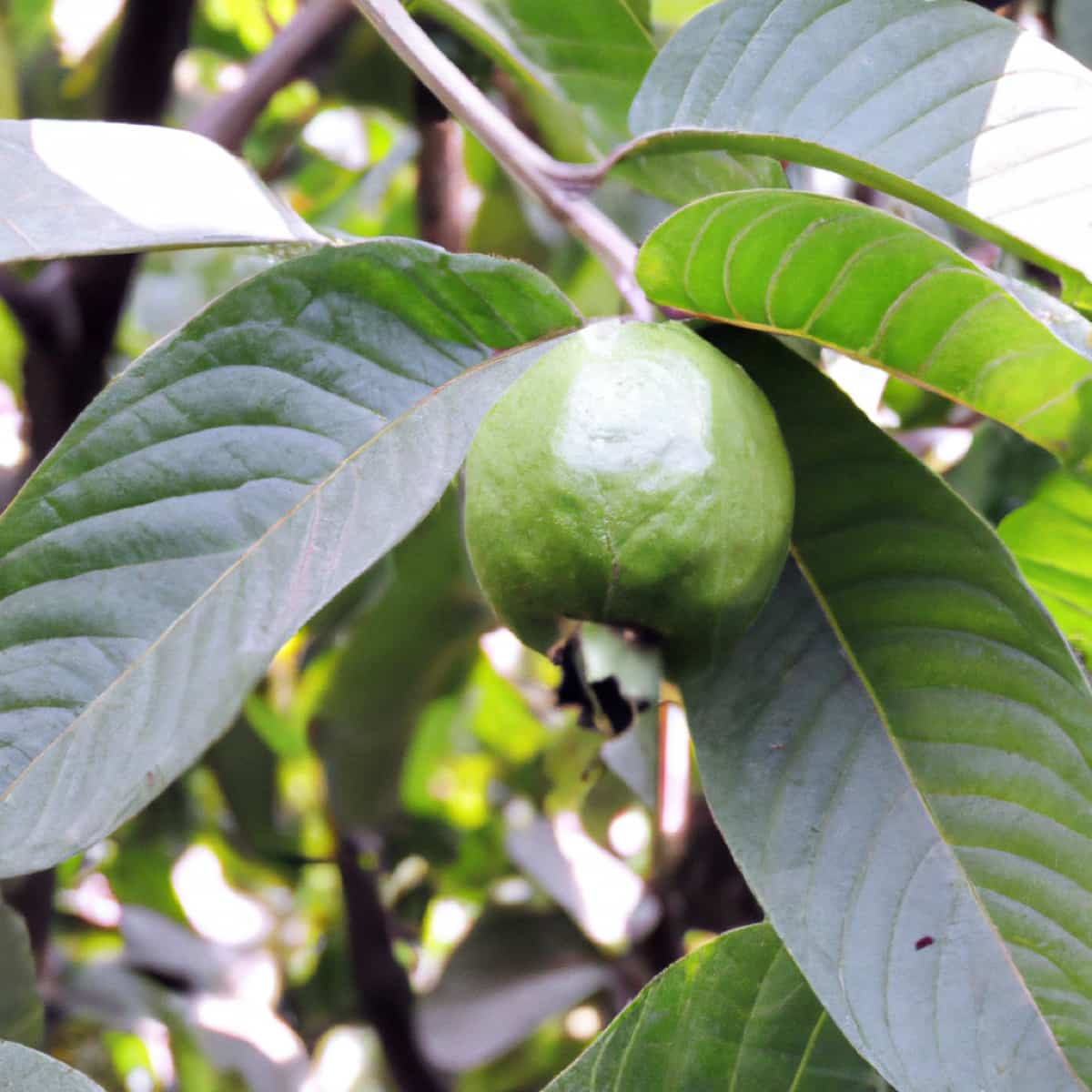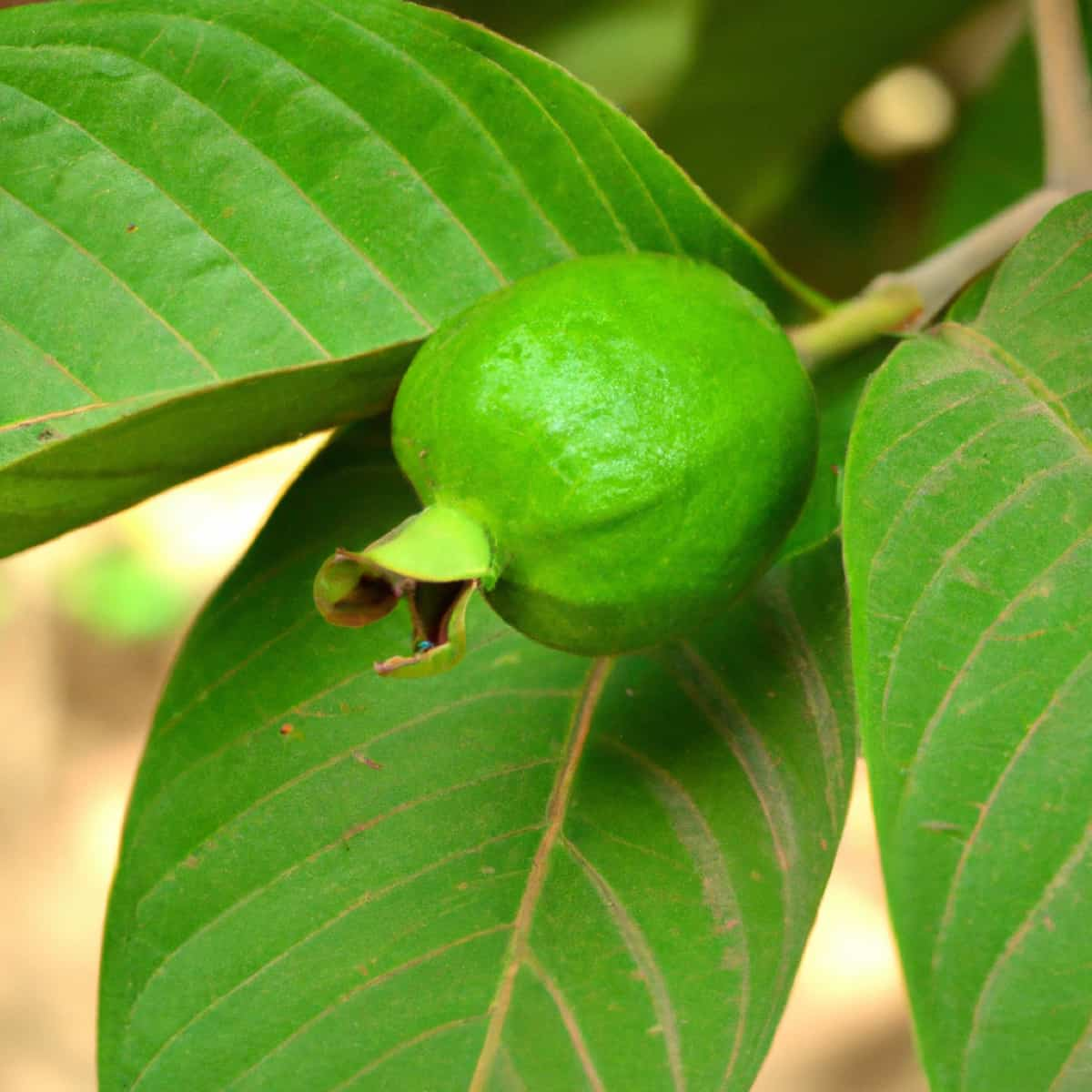Welcome to our comprehensive guide on managing common guava fruit diseases! Guava trees are a delight to have in your garden, but they can be susceptible to various diseases affecting their growth and productivity. This article will explore the symptoms, causes, and effective management strategies for these diseases, equipping you with the knowledge to keep your guava trees healthy and thriving. Whether you’re a seasoned gardener or a beginner, we’ve covered you with easy-to-understand information and practical tips.

How to Treat Common Guava Fruit Diseases
What Are Common Guava Diseases?
Some of the common diseases that can affect guava trees are Guava wilt, fruit rot, dieback, anthracnose (fruit rot), stem canker, and dry fruit rot caused by Physalopara psidii Stevens & Pierce and Diplodia netalensis Evans.
Another disease to watch out for is fruit canker, caused by Pestalotia psidii Pat. Guava trees may also suffer from algal leaf and fruit spots caused by Cephaleuros virescens Kuntze and styler end rot caused by Phomopsis psidii de Camara. Understanding these diseases and their symptoms is essential for effective management.
Major and Common Guava Diseases: Damage Symptoms, Causes, and Spread of Disease
| Disease | Damage Symptoms |
| Wilt | Light yellow leaves, Sagging of the plant, Premature fruit drop, Complete defoliation |
| Stylar end rot | Discolouration of the bloom end of the fruit, spreading discolouration turning the fruit brown to black, Fruit becomes soft |
| Anthracnose | Dramatic dieback of young shoots with attached fruit and leaves Small black dots on fruit and leaves that grow into dark brown, sunken lesions |
| Algal leaf spot | Rusty or brown spots on leaves during humid weather. Reduction in plant vigour affecting fruit development. Severe infections may cause black sunken spots on the fruit |
Guava Wilt
- Symptoms: Light yellow foliage, loss of turgidity, premature shedding, and defoliation, drying up of twigs, underdeveloped and hard fruits, root rotting.
- Causes: Movement of plants containing infected soil, waterborne spread, root injury.
- Favorable conditions: High rainfall, water stagnation, temperature range of 23-32°C with 76% RH.
Fruit Rot
- Symptoms: Whitish cotton-like growth on the calyx disc of the fruit, rapid development during humid weather, softening and discoloration of fruit, severe infection near the soil level, and fallen fruits.
- Causes: Spread by rain and wind, production of spores on diseased tissues, spores spread through rain splashes.
- Favorable conditions: Cool and wet environment, high humidity, poorly drained soils, injuries, close plantation.
Dieback and Anthracnose
- Symptoms (Dieback phase): The plant dies backward from the top of a branch, with dark brown to black necrotic areas and dried twigs without leaves.
- Symptoms (Fruit and leaf infection phase): Pin-head spots on unripe fruits, dark brown sunken lesions with black stromata, necrotic lesions on leaves.
- Causes: Spread by windborne spores, movement of infected plant material, transportation of fruits.
- Favorable conditions: Dense canopy, dew or rain, temperature between 10-35°C.
Stem Canker and Dry Fruit Rot
- Symptoms: Cracking of lesions on main branches and stems, wilted branches, dark brown to black mummified fruits.
- Causes: Pathogen survives beneath the bark and spreads through the air.
- Favorable conditions: Rainy season, closer planting without canopy management.
Fruit Canker
- Symptoms: Minute brown necrotic areas on green fruits, circular lesions, high margins, cankerous spots, and underdeveloped and mummified fruits.
- Causes: Wound parasite, avoidance of fruit injury.
- Favorable conditions: Germination at 30°C, avoidance of temperature extremes.
Algal Leaf and Fruit Spot
- Symptoms: Brown velvety leaf lesions, black lesions on immature fruits, sunken and cracked lesions, varying spot sizes.
- Causes: Survival on infected plant debris, airborne and rain splash spread.
- Favorable conditions: Zoospores spread in wet and humid conditions by splashing water.
In case you missed it: Management of Fruit Borer in Guava: Symptoms, Treatment, Chemical, Biological, Natural, and Organic Control

Styler End Rot
- Symptoms: Discoloration below the calyx, softening of the affected area, pulpy and light brown mesocarp tissue.
- Causes: Survival in infected fruits and debris spread through the wind.
- Favorable conditions: Temperature range of 10-35°C.
Management Practices for Disease Control in Guava Crop
- Pre-planting stage cultural methods Plough the field before digging pits.
- Planting stage: Cultural methods Maintain clean cultivation and keep the basin clean. Ensure proper soil health with adequate moisture and aeration, avoiding waterlogging. Prune moderately to heavily to remove disease-affected branches, improve light penetration, and open the canopy. Mechanical control methods Uproot and burn infested/infected young plants, replacing them with healthy saplings.
Guava Wilt Management Practices for Disease Control
- Follow clean cultivation and maintain strict sanitation in the orchard.
- Uproot and burn wilted trees, and dig trenches around tree trunks.
- Avoid damaging roots during transplanting.
- Maintain tree vigor through proper manuring, inter-cultivation, and irrigation.
- Treat pits with formalin and use resistant rootstocks.
- Consider eco-friendly approaches such as biological control and intercropping.
Fruit Rot, Fruit Canker, Algal Leaf, and Fruit Spot Diseases: Management Practices for Disease Control
- Prune and destroy dead twigs and fruits.
- Manage plant spacing and fertilizer regimes to avoid dense canopy.
- Practice good field sanitation to remove infected twigs and mummified fruits.
- Maintain tree vigor through cultural techniques like fertilization, irrigation, and pruning.
- Manage insect, mite, and foliar diseases to enhance tree vigor and reduce susceptibility to algal diseases.
- Chemical control with Zineb or Mancozeb may be applied.
Dieback, Anthracnose, Stem Canker, and Dry Fruit Rot Diseases: Management Practices for Disease Control
- Maintain orchard hygiene and monitor diseases.
- Use micro-irrigation systems.
- Follow clean cultivation and strict sanitation practices.
- Use disease-free planting material.
- Implement weed control measures to reduce humidity.
- Adhere to recommended plant density to reduce competition for sunlight, water, and nutrients.
Quicks Facts Related to the Management of Common Guava Fruit Diseases
- Symptoms of guava fruit diseases can include yellowing and loss of foliage, premature shedding and defoliation, underdeveloped and hard fruits, rotting roots, and discoloration of vascular tissues.
- Common guava fruit diseases can be identified by observing specific symptoms such as wilted trees, fruit rot, cankers, spots on leaves and fruits, dieback of branches, and dry and mummified fruits.
- Different pathogens, including fungi, bacteria, and algae, can cause guava fruit diseases. Environmental factors such as high humidity, poor sanitation, waterlogging, and inadequate cultural practices can also contribute to disease development.
- Guava wilt disease can be managed by practicing clean cultivation, strict sanitation in the orchard, uprooting and burning infected trees, using resistant rootstocks, applying suitable organic amendments, and implementing biological control methods.
- Cultural control methods for guava fruit diseases include maintaining proper soil health and moisture, practicing clean cultivation, pruning and removing disease-affected branches, managing plant spacing, implementing field sanitation, and using disease-free planting material.
- Mechanical control methods for guava fruit diseases involve uprooting and destroying infested or infected plants, removing dead twigs and fruits, and maintaining proper orchard hygiene.
- Chemical control options for managing guava fruit diseases include the application of suitable fungicides or bactericides, such as Zineb or Mancozeb, following recommended dosages and application timings as per the specific disease.
- Using biocontrol agents like Trichoderma spp. and Aspergillus niger AN27, adding organic manures and amendments, intercropping with companion plants like marigold and turmeric, and taking care of the health of the orchard as a whole are all ways to keep guava fruit diseases under control.
- Specific practices to control anthracnose in guava fruit include pruning infected branches, removing infected fruits and debris, applying suitable fungicides, ensuring proper orchard sanitation, and managing irrigation and humidity levels.
- Steps to prevent and manage stem canker in guava trees include maintaining orchard hygiene, monitoring disease incidence, using disease-free planting material, implementing good weed control, following recommended plant density, and employing micro-irrigation systems.
- Intercropping or companion planting with suitable plants like marigolds and turmeric can help manage guava fruit diseases by providing additional pest and disease control, enhancing biodiversity, and improving overall orchard health.
- Best practices for orchard sanitation to prevent guava fruit diseases include regular removal and disposal of infected plant debris, proper pruning and removal of dead or diseased branches, maintaining clean basins and orchards, and implementing proper irrigation and drainage practices.
In case you missed it: Stem Canker Disease Management in Guava: Symptoms, Treatment, Chemical, Biological, Organic/Natural and Preventive Measures

Conclusion
Managing common guava fruit diseases involves identifying symptoms such as wilting, rot, and cankers, understanding causes including pathogens and cultural factors, and implementing practices like clean cultivation, sanitation, pruning, chemical control, organic methods, and orchard sanitation to prevent and manage these diseases effectively.
- Beneficial Insects in Pest Management
- Natural Solutions for Pest Control in Flower Gardens
- Types of Fungicides Used in Agriculture
- Common Issues in the Fruit Development Stage of Pomegranate Farming
- Fruit Development Issues in Papaya: Easy Solutions and Treatment
- Soil-Borne Diseases and How to Protect Your Plants
- Practices to Prevent Disease Spread in the Garden
- From Wilted to Thriving: How to Treat Root Rot Naturally in Houseplants
- Natural Remedies to Cure Brown Spots on Fig Tree Leaves